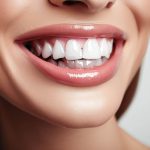In the realm of orthodontic treatments, braces have long been the go-to solution for correcting misaligned teeth and addressing bite issues. They come in various forms, but traditional braces, featuring brackets attached directly to teeth connected by wires, have been the norm for many years. However, a modern alternative has been gaining traction – self-ligating braces.
What Are Self-Ligating Braces, and How Do They Function?
Self-ligating braces share similarities with their traditional counterparts as they both employ brackets and a slender metal wire, known as an archwire, threaded through the brackets to gradually align teeth. The archwire exerts a continuous force on the teeth, encouraging them to move into their correct positions.
The distinctive feature of self-ligating braces lies in their bracket system, which incorporates a sliding door or clip. This clip, located at the front of the bracket, securely holds the archwire in place. This design diverges from traditional braces, which use small rubber bands or metal bands to secure the wire to the bracket.
The manner in which the archwire is held in place plays a pivotal role in how teeth shift. Some experts contend that the absence of an elastic tie around the bracket in self-ligating braces results in reduced friction on the wire and teeth. This reduced friction potentially allows for more unhindered tooth movement, potentially shortening treatment duration.
Self-ligating braces come in two primary types:
- Active Brackets
Active brackets incorporate a spring clip on the archwire that actively exerts force on the teeth. - Passive Brackets
Passive brackets, in contrast, do not exert pressure on the archwire but rely on a sliding mechanism.
Despite variations in how the archwire is secured, the fundamental principle remains the same – teeth alignment through the interaction between the wire and bracket, gradually guiding the teeth into their proper positions.
Self-Ligating Braces vs. Traditional Braces
The major distinction between self-ligating and traditional braces is the mechanism by which the wire is held within the bracket. Research suggests that treatment with self-ligating braces may offer faster and more comfortable results.
Pros and Cons of Self-Ligating Braces
As with any dental treatment, self-ligating braces come with their own set of advantages and disadvantages.
Pros:
- Reduced friction and discomfort during treatment.
- Shorter and fewer maintenance appointments.
- The potential for a shorter overall treatment time.
Cons:
- Higher initial cost compared to traditional braces.
- A possibility of clip breakage.
- Higher profile compared to traditional braces.
Effectiveness of Self-Ligating Braces
Studies have shown no significant differences in the effectiveness of self-ligating braces when compared to traditional braces. However, it’s worth noting that inserting archwires into active self-ligating braces is generally quicker than with conventional braces.
Side Effects of Self-Ligating Braces
While self-ligating braces are generally well-tolerated, they can occasionally present issues. The doors on self-ligating braces may get stuck, break off, or spontaneously open during treatment. In such cases, your orthodontist will either close the sliding door or replace the bracket.
Other side effects associated with self-ligating braces are similar to those of traditional braces and may include:
- Mild discomfort during initial adjustments.
- The potential for braces to break when consuming certain foods.
- The formation of white spots or cavities if oral hygiene is not maintained.
Regardless of the type of braces you choose, it’s essential to maintain good oral hygiene and follow the care instructions provided by your orthodontist.
Cost of Self-Ligating Braces
The average cost of self-ligating braces in 2023 typically ranges from $3,000 to $7,000, according to Consumer Affairs. It’s important to note that self-ligating braces tend to be more expensive than traditional braces due to their unique manufacturing process.
Traditional braces usually involve creating a bracket from liquid metal, placing it in a braces-shaped mold, and cooling it. Self-ligating braces require this process, plus an additional step to create the metal door covering the wire slot. Furthermore, accurately assembling the door and brace adds to the overall treatment cost.
Several factors may influence the cost of self-ligating braces, including:
- The extent of treatment required (limited or comprehensive).
- Estimated treatment duration.
- Specific insurance benefits or coverage.
- Any recommended additional orthodontic appliances.
Does Insurance Cover Self-Ligating Braces?
Dental insurance plans typically cover a percentage of the treatment cost, up to a maximum dollar amount. It’s important to note that insurance providers generally do not differentiate between the types of braces when covering orthodontic treatments. If you’re considering braces, it’s advisable to consult your insurance provider to understand your coverage.
Are Self-Ligating Braces Right for You?
The suitability of self-ligating braces depends on your individual dental needs and budget. To determine whether they are the right choice for you, it’s essential to have a detailed discussion with your orthodontist. They can assess your specific requirements and help you develop a personalized treatment plan that aligns with your goals. Remember, achieving a beautiful and healthy smile is a journey, and the right braces can make that journey more comfortable and efficient.



